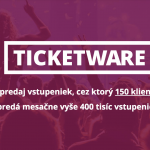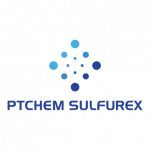This article is a case study of a cultural centre, which was established by civil initiative and has been on the Slovak cultural scene for 14 years. During this time it has managed to grow, move its location twice, organise and host nearly 4 000 cultural events, send Slovak artists abroad, host festivals and artistic residencies. In the last two years, it has been visited by more than 22 000 culture goers, 800 artists, many organisers of international festivals and the President of the Slovak Republic himself, Andrej Kiska. A4 has experienced flooding, debts, burglary, neighbours’ adversity, but is, through all this, standing readily on its feet and probably more than ever before.
A4 – space of contemporary culture is an independent, non-commercial cultural center located in Bratislava, which focuses on presentation, creation and education in current forms of theatre, dance, music, film, contemporary visual culture and new media art. It has been on the scene since 2003 thanks to the initiative of several cultural organisations and citizens who felt the lack of a platform open to ideas of new, experimental, marginal, but predominantly good quality artistic creation.
When we talk about independent culture or an independent cultural centre, many people don’t know what to imagine. Is this something strange? Is this some kind of underground or something else? They’re funded from grants, they live from public sources.. so how are they independent? When it comes to the activities of A4 and its relation to the concept of an independent cultural centre, it means that the centre was created by the initiative of citizens, and is therefore not established by the state nor the local government. It does not have a guaranteed budget and is not stipulated by any statute confirming its existence or that its existence is important for this society. However, it is neither restricted by such stipulation. It is more flexible, free, considers the current need of the society and does not abide by any ideology. A4 arose from the need to create a centre for free presentation and creation of contemporary art, which, in 2003, was more or less absent in the capital.
At the moment, the situation is different and cultural centres have been springing up like mushrooms. Over the last ten years, this trend can be seen not only in Slovakia, but all over Europe. Since the management and the financing of these initiatives is difficult – experiencing various problems, being ineffective, enduring crisis or a complete cessation are a common occurance.
A4 has been on the scene for 13 years and has gone through various phases of development. Growth, stabilisation, stagnation and crisis repeated a number of times around. I have experienced the period of the last two years in A4 firsthand and consider it interesting to look at precisely through the model of a life cycle of a non-profit organisation.
This model says, among other things, that it is natural, when the organization is growing, progressing, experiencing crisis, falls, and that it does not necessarily mean its end. On the contrary, far from it, if lessons can be learnt.
A4 as an organization was founded by a small group of people with a very strong idea and mission. Initially, it was a voluntary initiative, but grew to proportions where it was necessary to create a structure. The association for contemporary culture that center covers merged four civic innitiatives. Each of these innitiatives was devoted to a different genre. The abbreviation A4 reflects their connection. Theater, dance, music and new media. Over time the organisation changed and only two subjects have remained. A4 thus currently consists of two civic innitiatives.
When in 2014 I came to A4, it was led by its founders Ľubo Burgr – a composer, musician, actor, director and director of the theater group SkRAT and Slavo Krekovič – a musician, musicologist, university educator and project manager. After more than ten years of management they became not only natural leaders but also successful cultural managers and actors in the field of independent culture. Managing a centre creates many pitfalls associated with the fact that after a while you do everything else but artistic activities. Accounting, project management, repairing toilets or a leaky roof. I think this was felt in our organisation. The need of A4 founders to involve themselves again mainly in artistic activity was an impetus for further development of the organization.
In January 2015, which I consider being a breakthrough year in this sense, the situation was as follows.
The set up of structuring and division of labor was relatively simple. Individual areas such as production, marketing and management of the cafe usually employed one person who worked more or less independently. This was too few people for the number of events that A4 produced annually. Each of them had, among other things, other functions and tasks, often unrelated to their initial or professional focus. Job descriptions didn’t exist, often making the workflow complicated. In addition to internal organizational problems we were faced with various other problems, such as: low visitor numbers, outgrown audience and the inability to create new, poorly communicated changes of venue, increasing competition, problems of a financial nature (cash flow), poor promotion and publicity activities and a badly run cafe, that was asking to become an adequate tool for income generation. All this and more hung in the air. The organization was stagnating. The operation worked, but kept spinning in the same vicious circle. Write projects, wait for results, enjoy successes and feel the disappointment of failed applications, then create programme and endure low traffic volumes… An annual carousel.
The problems and the same “auto-pilot” mode were known. The management realized that the situation was not ideal and the organization needed a kick-start. If not for their real interest, nothing would have changed. We were helped by the possibility to enroll in an educational and consultation programme Escalator, which is tailor-made for cultural organizations. At one point we all met and organized a sort of internal audit, which highlighted the weak spots of our organization. We set our objectives and areas we needed to improve. This procedure sounds brief and clear, but the process itself was less obvious. We didn’t transform overnight, nor things started to change on their own. It cost us a great number of meetings, brainstorming sessions and efforts to hold on to new goals.
Several months later the management proposed to change the organizational structure. I was approached with an offer to become the manager of the center and keep the organization running. Such a challenge cannot be refused, especially if you’re an ever curious person. Slavo Krekovič and Ľubo Burgr took charge of the programme and the artistic leadership of the organization.
We diversified the organisation structure, I am responsible for areas such as PR and marketing, production, projects, the cafe, and administration. The artistic administration took charge of the programme and individual dramaturgical sections. This mode of operation posed other questions and pointed to the ineffective original processes or the distribution of competence at individual positions. So we started cleaning up.
This process took about a year and a half and consisted of an enormous amount of change. We started building internal organizational culture starting with the reorganization of the offices through to the creation of job descriptions, work manuals, setting up rules, streamlining the lengthy meetings and teambuildings. We carried out a short survey of our audience base, introduced new forms of marketing and with the desire to create a wider audience (perhaps interest the grown ups too), we started to organize events for children and educational events for schools. For visitors who still didn’t know where we are located we used all our communication channels to bring attention to our new address (Karpatska 2, YMCA Building). We continued to focus on the quality of our programme and thanks to the success of a large international project we have managed to attract artists we wouldn’t normally be able to pay for. As for the advertising and promotion, we have negotiated several beneficial cooperations with private companies and for the first time in the history of the organization we also use interesting outdoor areas. In December, our new visual concept came to life, communication is clearer, more understandable and I believe even slightly timeless. In the cafe, we introduced a new POS system, new pay scheme and better control of the efficiency of handling stock.
Over the past two years there have been many changes done by many people, and each person has brought a piece of their idea and energy to the team. It is February 2017 and I feel that we’re not in hot water anymore. The changes that we have made in the past two years have been very refreshing and this can be felt at all levels, and we are gradually receiving positive feedback also from the outside. There is an all-round good feeling, as if you have just cleaned your house. I feel that A4 has successfully moved from stagnation to stabilization. I firmly believe that what follows now is further development and growth of the organization through strategic planning, provisioning, preparing marketing strategies and similar. I view all these steps mentioned above as something to look forward to, especially now that A4 has a fantastic team of people whom you can rely on and who, after thirteen years, still believe its original idea.









Add Comment